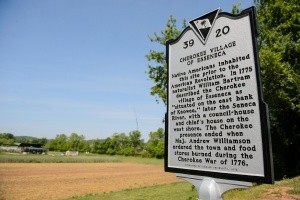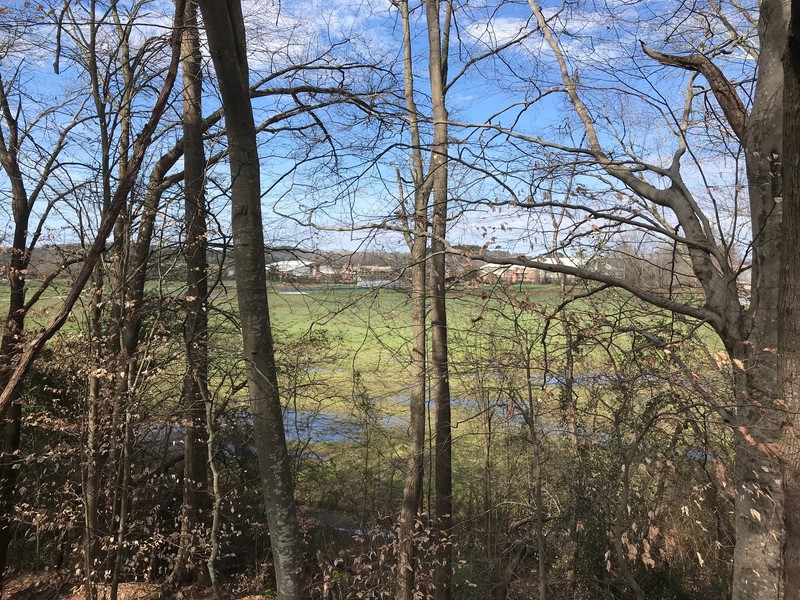Calhoun Bottoms Historic Marker
Introduction
Text-to-speech Audio
Images
Calhoun Bottoms Historical Marker

Agricultural Fields

Clemson students in Agricultural still cultivate these fields

Backstory and Context
Text-to-speech Audio
In an edition of the New York Herald published on July 26th, 1849, an author referring to himself as "A Traveller" [sic] wrote about his time spent at Fort Hill among the Calhoun Family. The article, "A Visit to Fort Hill," describes the "farm:"
“There is nothing wanting on the farm; fields of oats, of wheat, of potatoes and of rice, and all in a forward state. The
rice field occupies a part of the low land near the Seneca River, and its pale green was in striking contrast with the dark
green of the corn. The farm is a model farm it consists of about one thousand acres, four hundred and fifty of which are
in cultivation. Mr. Calhoun’s method of arrangements are seen everywhere. His system of drainage, of ditching, and
manner of planting on the side hills--so that the furrows carry off the water without allowing the land to wash-- and so
useful is it found that his neighbors copy his plan" (1).
In this article, Calhoun discusses his knowledge of the Cherokees:
“By the way, while walking in the large corn field, I asked Mr. Calhoun what gave the name of Fort Hill to his place.
He answered my query by pointing out to me a long hill about a mile from the mansion, and west of the corn field,
above the Seneca, and remarked: “There was a fort stood there, built, I believe, during that time by the Americans,
and called Fort Hill. It was dismantled with peace, but its name has been given to my farm, on which the old fort
stood.” His conversation is ever instructive and while giving me the history of Fort Hill, of which the above is but an
abrupt summary, he gave a most interesting narration of the Indian war, long before the time of the French war of
the Six Nations, of whom the Senecas extended down South as far as this region, and gave their name to the river
near us; of their power and greatness, their war with the Cherokees; and when the Cherokees had driven back to
the north, he came down to the history of the Cherokees themselves--their alliance with the French against the
English colonists.”
Cite This Entry
Hiott, Will and Caroline M. Ross on behalf of Fort Hill. "Calhoun Bottoms Historic Marker." Clio: Your Guide to History. July 30, 2020. Accessed April 1, 2025. https://theclio.com/entry/68030/tour/22
Sources
Newsstand | Clemson University News and Stories, South Carolina. “Markers Signal New Effort to Share Clemson’s Full History.” Accessed May 26, 2020. https://newsstand.clemson.edu/markers-signal-new-effort-to-share-clemsons-full-history/.
“A Traveller” [sic], “A Visit to Fort Hill: The Residence of the Hon. John C. Calhoun, Near Pendleton, S.C.,” The New York Herald, July 26, 1849, Morning Edition edition.
https://newsstand.clemson.edu/markers-signal-new-effort-to-share-clemsons-full-history/
images courtesy of Fort Hill
images courtesy of Fort Hill

